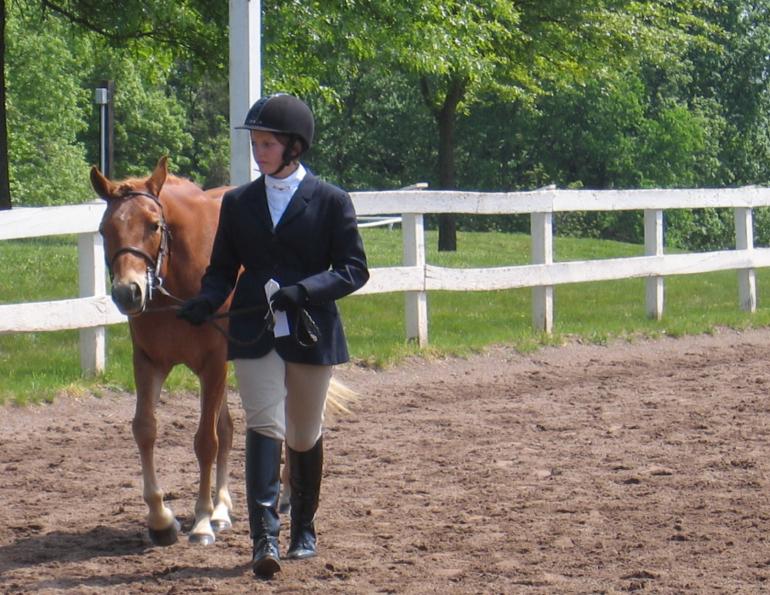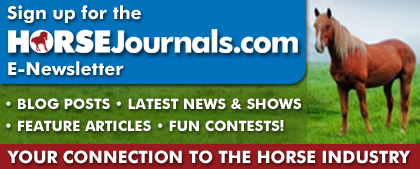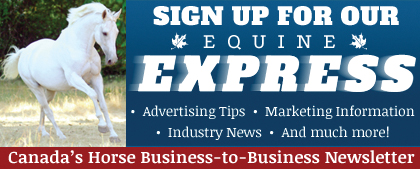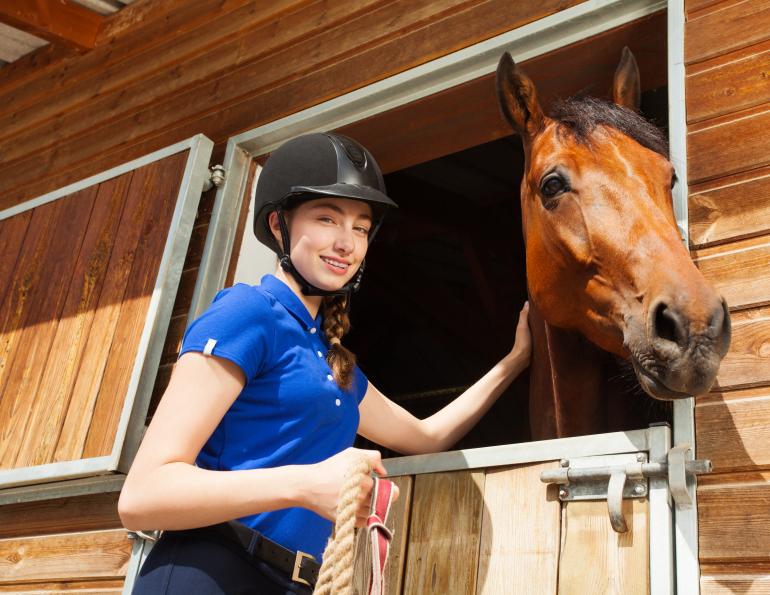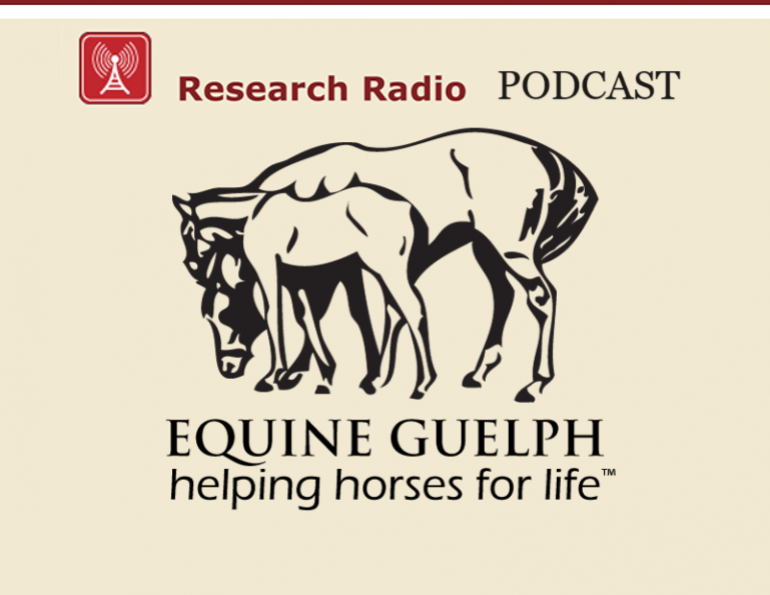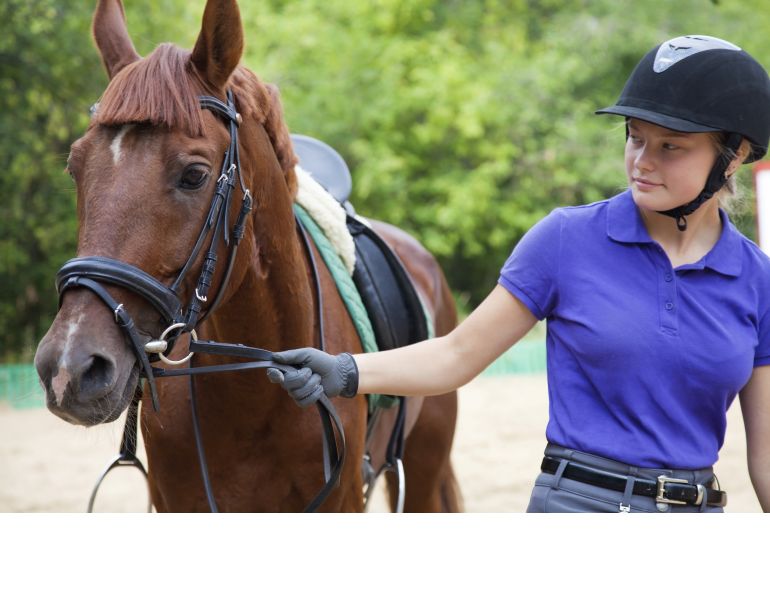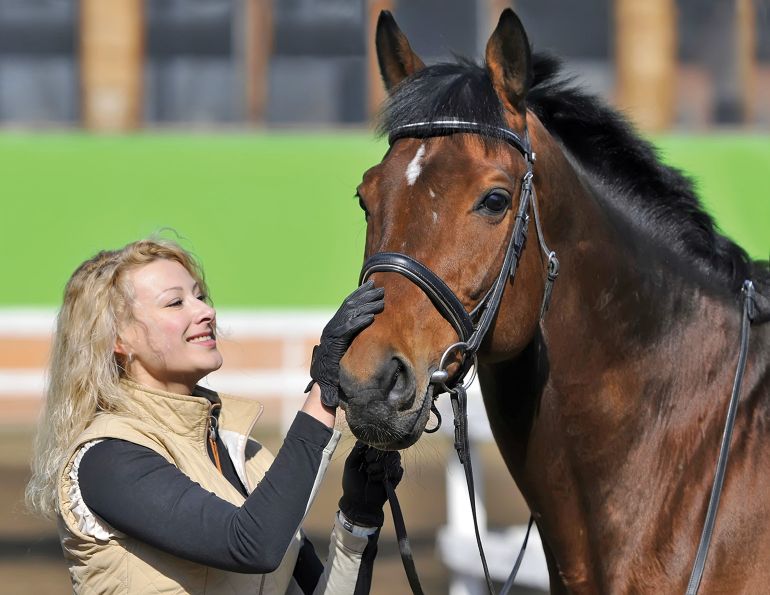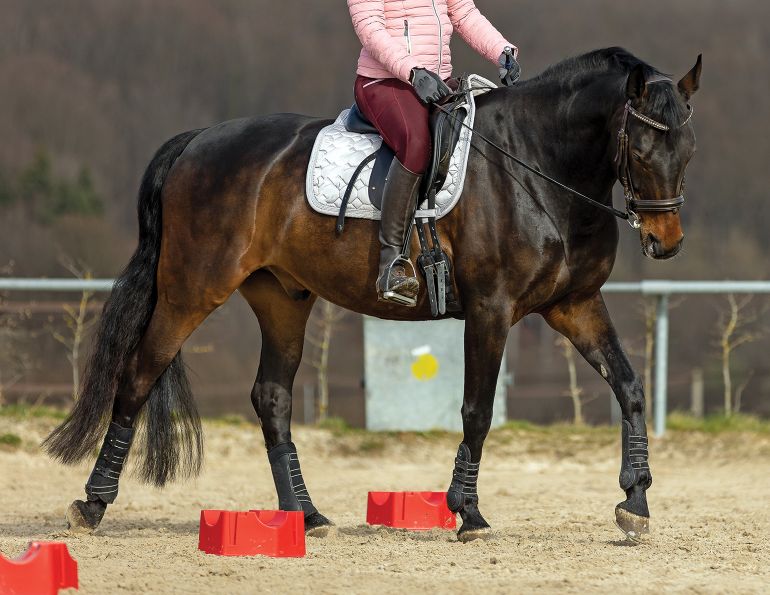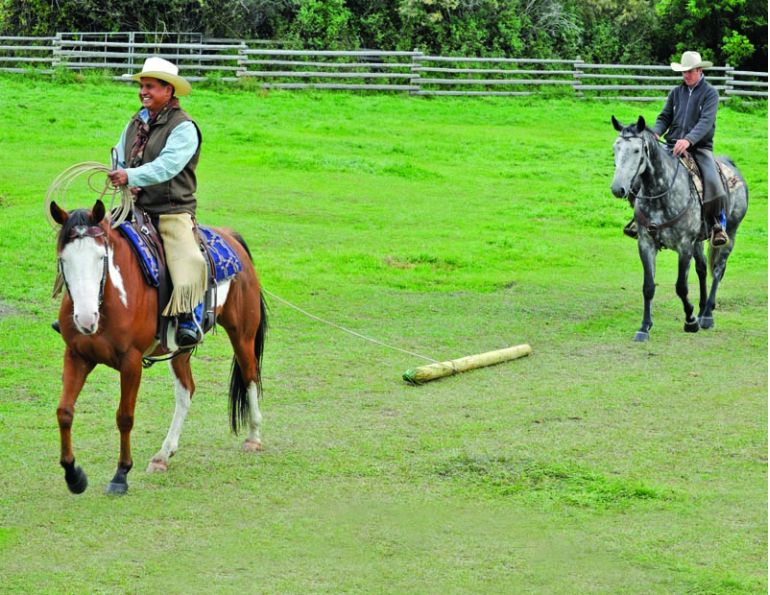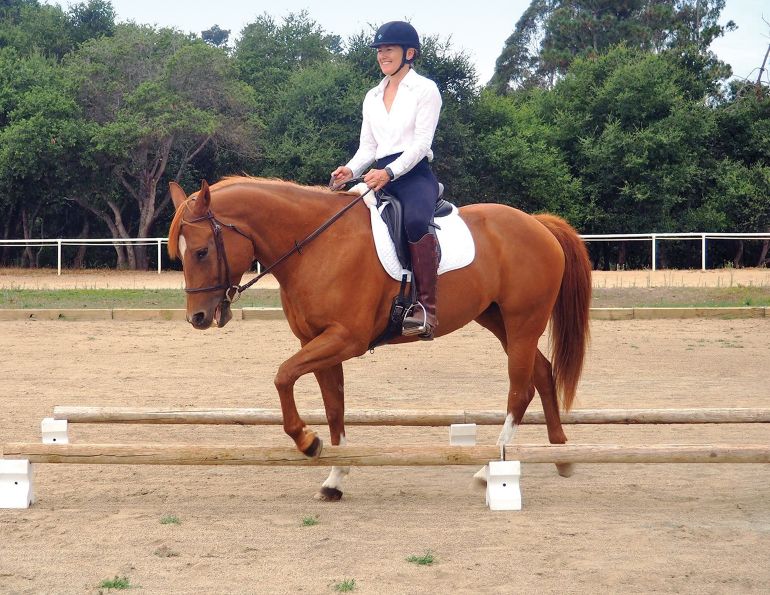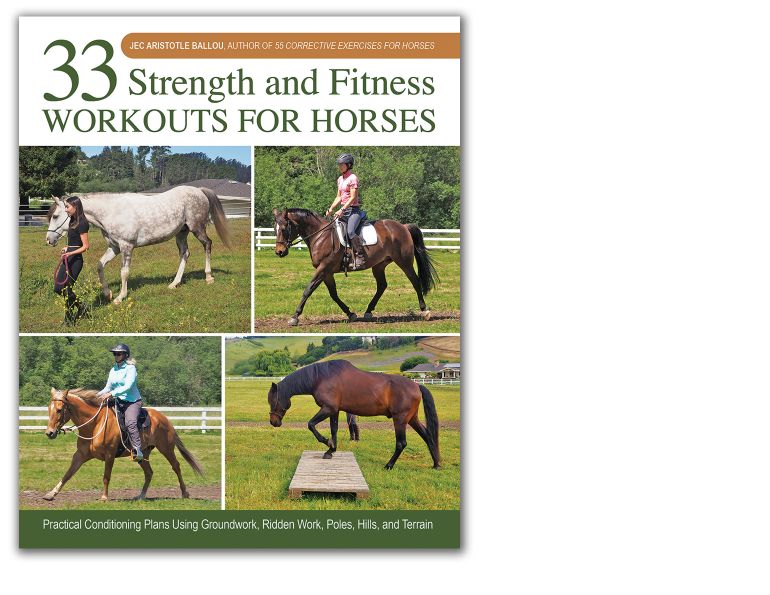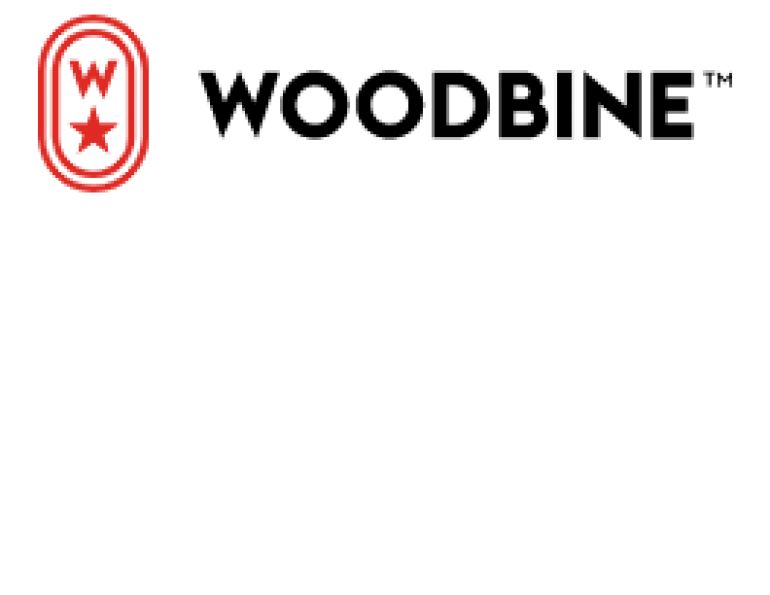By Lindsay Grice
Q My gelding won’t trot willingly beside me for showmanship. I don’t have the strength to pull on him any harder and when I snap on the lead shank he tosses his head and stalls out. Once I get him in motion he is great for the rest of the manoeuvers (turns, backing, etc.).
A You will use the principle of the “freedom box.” When your horse resists coming forward you will inspire him to do so by dialing up the level of discomfort and immediately releasing the pressure when he trots. Your timing is the key.
Following are some DOs and DON’Ts:
• DO make sure your horse accepts lead chain pressure under his jaw before working on “comealongs.”
• DO make sure you have been very clear with your body position that you intend to run forward. Remember, always be clear to your horse and always give him ample warning before any reinforcement. I always say to my showmanship students, “Body first, hand second.”
• DO apply firm, steady pressure under your horse’s jaw which he can immediately relieve by coming forward, similar to being tied to a wall. Keep your right arm straight until he trots and then soften it right away like a spaghetti noodle.
• DON’T jerk. As you’ve already learned, jerking activates a horse’s flight response — he will react in fear and toss his head upward.
• DON’T whip him with your lead shank behind your body. Doing so will only teach him to swing his hip away from you.
• DO pull out the big guns if necessary. With an experienced horse that understands completely the cue to go forward, I may casually toss a little stone at the back end of a student’s horse after she has asked him to trot forward. If my aim is good I can remain at a distance so that the horse has no idea the stone came from me. I suppose a water gun might work in the same way. Timing is the key.
Main Article Photo: Make sure you are very clear with your body position and give your horse sufficient warning of what you intend to do. Don’t jerk the lead shank which will activate the horse’s flight response and cause him to toss his head upward.
This article originally appeared in the July 2010 issue of Pacific & Prairie Horse Journal.



